#High-Quality Ceramic Material
Explore tagged Tumblr posts
Text
Dinnerware Set for 8 | Amalfiee Ceramics
Handmade Gold Rimmed Massive Dinner Set
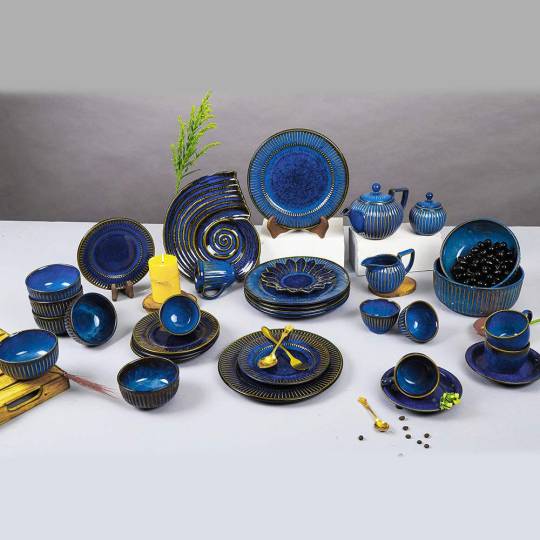
The dinnerware set for 8 by Amalfiee Ceramics is the perfect choice for those who love to entertain. This beautifully crafted set features 8 complete place settings.
Each one made from high-quality ceramic material and designed for both style and function.
0 notes
Text
More Art-Related Vocabulary

Abstract Expressionist: An artistic movement of the mid-20th century emphasizing an artist’s freedom to express attitudes and emotions, usually through nonrealistic means.
Age of Exploration (also, Age of Discovery): From the early 15th century to the early 17th century, European ships traveled around the world in search of new trading routes, lands, and partners to supply an ever-growing European market.
Albumen silver print: A photograph made using a process that was prevalent until the 1890s. The paper is coated with albumen (egg whites), and the image is created using a solution of silver salts.
Brayer: A hand roller used for applying ink to relief printing blocks or occasionally for the direct application of paint or ink to a surface.
Caricature: A representation in either literature or visual art that includes a ridiculous distortion or exaggeration of body parts or physical characteristics to create a comic or gross imitation.
Ceramics: Vessels of clay made by using a variety of shaping techniques and then hardening or firing the clay with heat at a high temperature.
Chasing: A term encompassing two processes in metalworking: (a) modeling decorative patterns on a hand-shaped sheet-metal surface using punches applied to the front, and (b) finishing and refining a cast sculpture.
Classical: Describes a prime example of quality or “ideal” beauty. It often refers to the culture, art, literature, or ideals of the ancient Greek or Roman world, especially that of Greece in the 4th and 5th centuries B.C.
Collage: An art form and technique in which pre-existing materials or objects are arranged and attached as part of a two-dimensional surface.
Color palette: (a) A set of colors that makes up an image or animation, and (b) the group of colors available to be used to create an image.
Composition: The process of arranging artistic elements into specific relationships to create an art object.
Daguerreotype: An early method of photography produced on a silver plate or a silver-covered copper plate made sensitive to light.
Exoticism: Fascination with and exploration and representation of unfamiliar cultures and customs through the lens of a European way of thinking, especially in the 19th century.
Expressionism: A style of art inspired by an artist’s subjective feelings rather than objective or realistic depictions based on observation. Expressionism as a movement is mainly associated with early 20th century German artists interested in exploring the spiritual and emotional aspects of human existence.
Gelatin silver print: A photograph made through a chemical process in which a negative is printed on a surface coated with an emulsion of gelatin (an animal protein) containing light-sensitive silver salts.
Illuminated manuscript: Comes from the Latin words illuminare (to throw light upon, lighten, or brighten), manus (hand), and scriptus from the verb scribere (to write). A handwritten book, usually made from specially prepared animal skins, in which richly colored and sometimes gilded decorations, such as borders and illustrations, accompany the text.
Illuminator: A craftsman or artist who specializes in the art of painting and adorning manuscripts with decorations.
Impressionist: Referring to the style or theories of Impressionism, a theory or practice in painting in which objects are depicted by applying dabs or strokes of primary unmixed colors in order to evoke reflected light. Impressionism was developed by French painters in the late 19th century.
Inking plate: A flat surface used for rolling ink out in preparation for applying ink to a plate or block.
Inscription: A historical, religious, or other kind of record that is cut, impressed, painted, or written on stone, brick, metal, or other hard surface.
Source Art Vocabulary pt. 1
More: Word Lists
#art related#word list#photography#dark academia#writing reference#spilled ink#writeblr#literature#writers on tumblr#writing prompt#poetry#poets on tumblr#history#studyblr#creative writing#writing inspiration#writing inspo#writing ideas#art#konstantin somov#rainbow#nature#art vocab#writing resources
62 notes
·
View notes
Text
What are composition figures?

If you're a longtime toy collector, you've no doubt stumbled upon these things! You may know them better as Elastolin or Lineol figures, but you probably don't know much more than that. Are they ceramic? Wood? Some kind of old-timey plastic? Where did they come from? And why are they always broken?
Composition figures are antique toys, produced from the late 1800s, up until the 1960s - though their heyday was around WWII, where the Elastolin and Lineol companies really ramped up production. In fact, these companies produced so many figures of such high quality, that their names have since become synonymous with "composition figures" even though dozens of other companies all over the world produced similar figures. Figures produced by Elastolin are always marked with he brand name, while Lineol figures either have the brand name, a "Germany" mark, or both. If it doesn't have either of those brands, it's (usually) not technically a Lineol/Elastolin figure - which is why I stick to calling them "composition figures."


So, what are they made of?? For starters, all larger figures have a metal skeleton - sometimes the entire head/tail may be made out of metal! In my own collection I have a yak with a metal head and a bison with a metal tail. But usually, the skeleton is a simple support structure for the body, as shown on these xrays:

As for the body itself, the main component is sawdust, but the rest of it is kinda unknown. We know that the other major component was a binding agent, but no recipe has been preserved, as far as I can find. We do know that some recipes have included flour, dextrin, casein, bone glue, water, linseed oil, natural resins, and kaolin. However, some recipes are believed to have had too much moisture, which leads us to the next question...
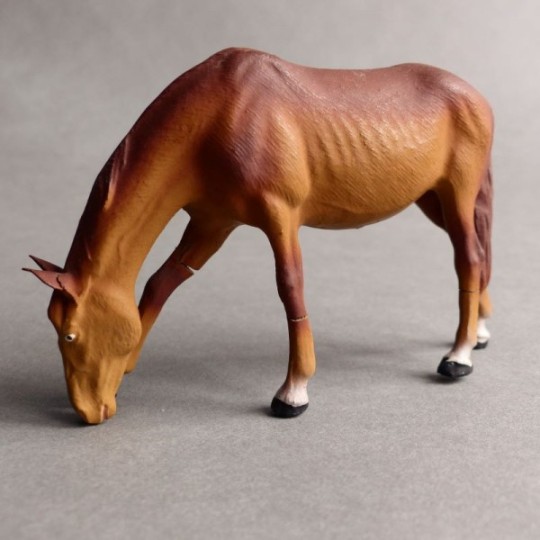
Why are the legs always broken?? Part of it is time and rough handling, but most of it is that the material expands and contracts in response to heat/humidity. Composition figures are stupidly sensitive to environmental changes, and become very brittle over time - eventually, simply moving them around may be enough to cause fractures! Unfortunately, these cracks expose the skeleton and, since they were made of simple iron, the skeleton can oxidize and eventually break completely.
Most composition figures are about the same scale as modern toyline brands (Schleich, Safari, CollectA, etc.) so displaying them is pretty straightforward. Storing them, however, is another matter. It is imperative that they stay out of direct sunlight and away from heat sources. They should also be kept in as air-tight conditions as possible. And, of course, don't get them wet.
Cleaning them is not easy. I have had moderate success with a damp (not wet!) cotton swab. It didn't damage the figure, but it also can't completely get rid of 70+ years of accumulated dust, smoke, and sweat. I'm wary of using soap, as the pH change might affect them. Right side has been cleaned, left side is still dirty:
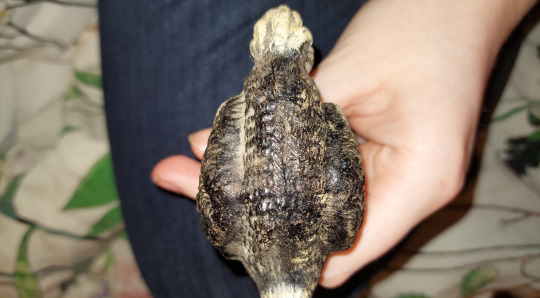

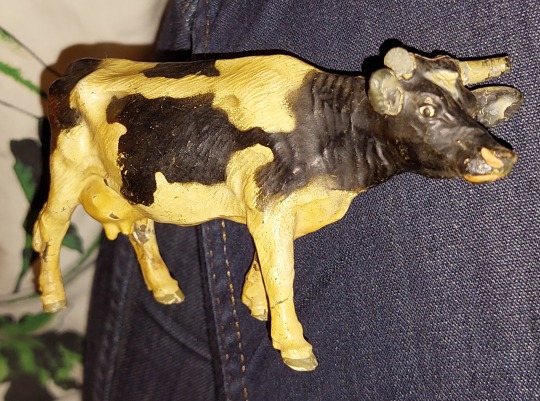

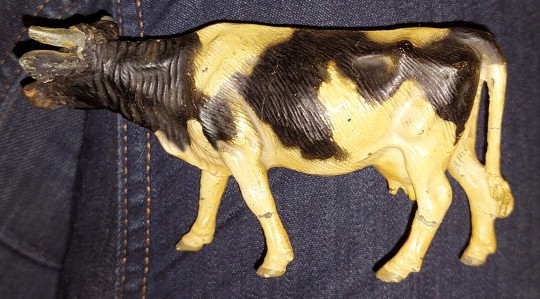
If anyone has any tips on cleaning, I'd be happy to hear it!
Thanks for reading! :D
130 notes
·
View notes
Text
Woman with the moon in her eyes
Part II

Previous: part I
A beautiful sunrise spread over the valley; birds took flight from a nearby tree; the spiderweb glittered with droplets of remaining dew...
Natsuki saw a wonderful morning in a ceramic bowl full of water. This is what her blood demon art looked like. She could see everything at any distance in the water; it acted like interconnected mirrors. She had been trying to hide this ability from Muzan for so many years, especially since she had seen the heir of Ubuyashiki. Despite her situation, she remained loyal to the Ubuyashiki family to which she was supposed to belong. Everything she dreamed of died along with her humanity - starting a family, being a good housewife, helping fight demons. Even the sunrise she was just looking at was taken away from her because she would never feel those rays of sunlight on her skin.
Natsuki, full of frustration and disagreement with her fate, spilled the bowl of water with a sweeping movement of her hand.
"Heavens, calm my frayed nerves, give me strength" she said.
If she was going to spend forever here, she decided not to waste any more time. She could take advantage of the opportunity given to her; live as part of the Ubuyashiki family despite being a demon.
Natsuki was aware that there was something Muzan was looking for. He never said what it was exactly, but he worked diligently in the lab. She wanted to stop him. It no longer mattered how much she had to sacrifice.
Natsuki took a deep breath and started searching the closet for the best dress.
Soon after, she managed to dress up like never before since her transformation. Looking at herself in the mirror, she felt very feminine. She chose a blood-red kimono made of the best quality material; while the right side was decorated with flying cranes. Her blonde hair was tied in a high bun, fastened with a hair needle with bells. She finished with a light touch of red on her lips.
Natsuki prepared a tray with a pot of matcha tea; she set down a cup made of the best foreign porcelain.
"Let's try to stir things up a bit"
She slowly moved towards the laboratory where Muzan was experimenting, somewhere deep inside Infinity Castle. As she walked through the halls, every door opened for her. Somewhere in the distance, Nakime could be heard playing. And with every step Natsuki took, the bells on her head rang; with each step, the doubts grew. It's the riskiest thing she tried in ages. One mistake and the demon king could stop considering her as his plaything. Not that she cared about life - not like this. The thought of missing the chance to help the corps terrified her more.
Before the last door, she felt Muzan's scent and his aura. Her cells reacted to the memory of the masculine scent she felt every full moon. Trying to control it, she shook her head and the door opened.
"I couldn't have expected a more unusual guest," Muzan replied, mixing the measuring cups without looking at Natsuki.
"Please excuse me for disturbing you, I've prepared some tea," she said, putting the tray aside.
Muzan looked dignified and elegant, as always. He wore a white long-sleeved shirt and a crimson vest, with black suit pants. Pink cat eyes peeked out from under his black wavy hair.
"We don't need such human things..." he replied dispassionately.
"We don't need a lot of 'human things', and yet..." she continued the topic, more eloquently.
At that moment she caught his attention, coming closer than she usually did without any explicit command. She ran her delicate hand over the vials and measuring cups.
One of the test tubes caught her attention on the counter. Its color seemed to differ from the rest; while most were red, this one was pale blue. Natsuki, without thinking for a long time, decided to take it to investigate further what Muzan was working on. Leaning fully on the counter, she looked over her shoulder at Muzan.
"Despite your fondness for Western novelties, I know you're old-fashioned, and we never completed our wedding duty..." she continued, trying to reach for the test tube.
"Is it so? I gave you freedom in this matter, considering the circumstances."
"Maybe my approach was wrong. I am a wife after all."
She heard a longer "hmm" from him. After a moment, she felt his hands on her tilted hips, slightly guiding her to spread her legs further. Muzan leaned closer to her, pinning her to the counter. His chest was close enough that she could feel him moving steadily on her back. For a moment, the thought that IT was about to happen passed through her mind; that together they became one.
Suddenly she heard a crash. When she opened her eyes, the test tube she wanted to steal was shattered under Muzan's hand. The blue liquid spilled and then evaporated. A moment later she felt Muzn's lips on her neck, kissing her lightly. It lasted a second.
"I can fulfill my marital duty, but I want more than that," he replied, and after a while he began to leave the room.
Before the door closed behind him, he added, "Stop thinking you belong to people who abandoned you a long time ago."
Natsuki slammed her fist on the counter. She stood up, full of dissatisfaction, and then she heard Nakime pluck the string of her instrument. In the blink of an eye she was in her room on her bed.
Nothing could have made her realize more clearly where the cage was - inside this bedroom.

21 notes
·
View notes
Text

In This Ancient Workshop, Greeks Crushed Snail Glands to Make the Purple Dye Worn by Royalty
Archaeologists discovered remnants of a 3,600-year-Old Dye factory on an island in Greece.
On an island in Greece, researchers have discovered a 3,600-year-old workshop that once turned out a rare purple dye coveted by royalty—and made from snail glands.
Archaeologists were excavating recently in the Bronze Age town of Kolonna, on the Greek island of Aegina, when they discovered two Mycenaean buildings. As the researchers write in a study published in the journal PLOS ONE, the buildings date to the 16th century B.C.E., and the older one contained pigmented ceramics, grinding tools and heaps of broken mollusk shells: all indicative of a purple dye factory.



In this workshop, ancient Greeks produced the vibrant pigment known as Mycenaean purple—or, as the Romans called it, Tyrian purple. First manufactured by the Phoenicians in present-day Lebanon, the dye was extracted from the mucus of the Mediterranean’s carnivorous sea snails. Across the region, only the rich owned anything dyed Mycenaean purple, as the color’s production was painstaking.
As Roman historian Pliny the Elder once wrote, thousands of snails were required to produce a single ounce of purple dye. Its creators had to crush snails’ shells, extract their tiny glands, mix them with salt water and let the concoction steep in the sun, per the study. The result was a “deep purple, lilac or dark red color,” which was used on textiles and paintings, study co-author Lydia Berger, an archaeologist at the University of Salzburg, tells Popular Science’s Laura Baisas.
The fragments of pottery the researchers found on the site were probably containers for dye. As Berger notes, the pottery’s pigments are so high-quality that they could still be extracted and used to dye clothing today. The site also contained stones used for grinding, a waste pit and piles of crushed snail shells.
Eventually, snail purple would become the color of royalty. In the first century C.E., Roman Emperor Julius Caesar named Tyrian purple his official color and inspired successive emperors to don the same hue. But back in the 1500s B.C.E., the color was just beginning to be produced.


At the time, Kolonna was a dense, fortified small town, says Berger, whose inhabitants produced and traded lots of different handcrafted products and raw materials like Mycenaean dye, which wasn’t yet exclusive. Though the dye factory is in an urban area—an oddity among dye workshops—its coastal location is ideal for purple production. As the researchers write, snails had to be caught and kept alive until their glands were harvested.
By analyzing the shells in this particular workshop, researchers concluded that just one snail species was used there: the banded dye-murex. Interestingly, it wasn’t the only animal killed at the site. As Newsweek’s Aristos Georgiou writes, archaeologists also found the burnt bones of several piglets and lambs. Researchers suggest these young mammals were sacrificed in the workshop as part of a ritual, meant to somehow bless the dye’s production.
As they write in the study, the ancient site not only proves that purple dye was manufactured in cities, but also provides “new insights into the technological and possibly spiritual background of the process.”
By Sonja Anderson.

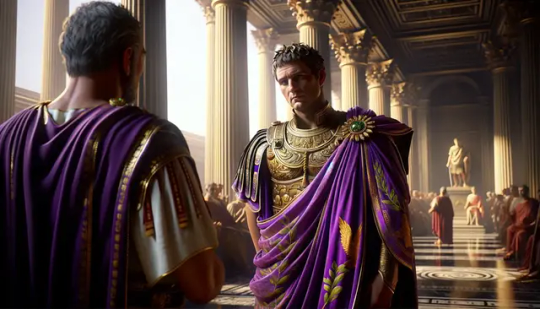

#Archaeologists Discovered Remnants of a 3600-Year-Old Purple Dye factory in Greece#Bronze Age town of Kolonna#Greek island of Aegina#purple#Mycenaean purple#Tyrian purple#ancient artifacts#archeology#archeolgst#history#history news#ancient history#ancient culture#ancient civilizations#ancient greece#greek history
22 notes
·
View notes
Text
I wrote like a million words about this in a draft but like. This book on kashrut, I mostly like! But. My TL;Dr is basically:

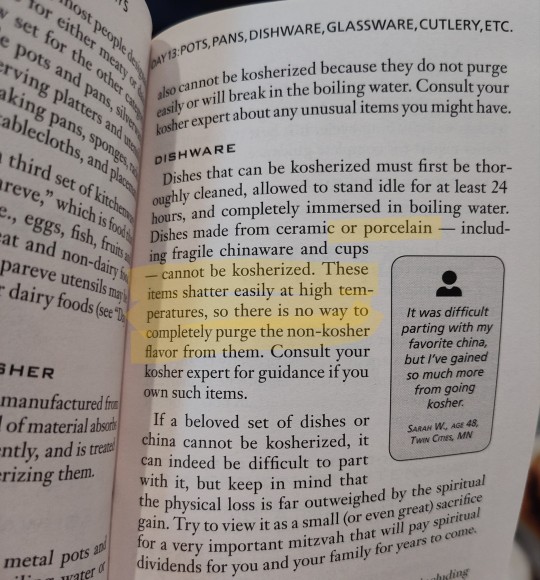
"dishes made from ceramic or porcelain — cannot be kosherizes. These items shatter easily at high temperatures...."
Me: hey all that soot on this porcelain sintered countertop is going to wipe right off

porcelain is fired at higher temperatures than you use to forge carbon steel and is extremely heat resistant, so what on earth are you TALKING about??
Like no, you can't kasher delicate, translucent wall porcelain cups and bowl. Fine luxury wares will probably crack! They're also not what most people use to eat on a day to day basis or in their kitchen.
regular porcelain dinnerware of good quality is usually oven safe (double check!) and fine going up to at least 600 degrees F. Porcelain is also one of the LEAST porous manufactured materials out there.
Marble, quartz, and granite are all technically porous rocks but all those countertops can be kashered! Funnily enough, when I look for kashering advice on stone countertops, you have to reseal granite countertops yearly, or marble very frequently to reduce porosity. Porcelain countertops don't need sealing maintenance because they're non-porous!
You're not supposed to like, prepare food directly on stone countertops because they're porous and absorb bacteria and juices. But you COULD do that directly on porcelain, clean after, and have no worries about absorption.
I can't believe people think they could kasher granite counters, but not porcelain. Absolutely bonkers.
25 notes
·
View notes
Text
Subtle Gear for Cat Therians!
Hello! My Pinterest and Etsy are full of cat related things, so I thought I'd share some things that could make cute and interesting gear for the therian community!!
Most of these you can wear, but remember gear can take any shape and form, meaning it could also come in the form of decorations :3
Enjoy!

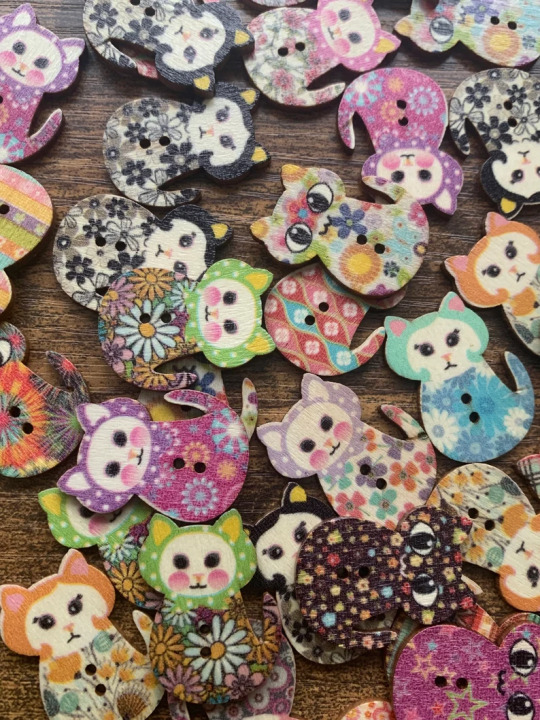
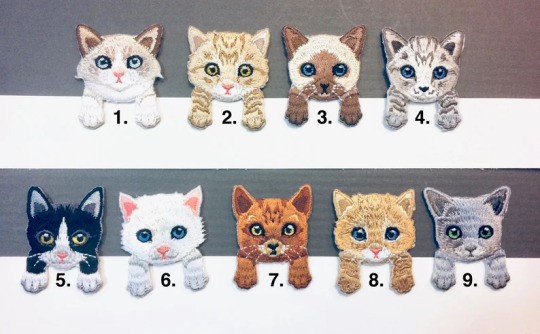
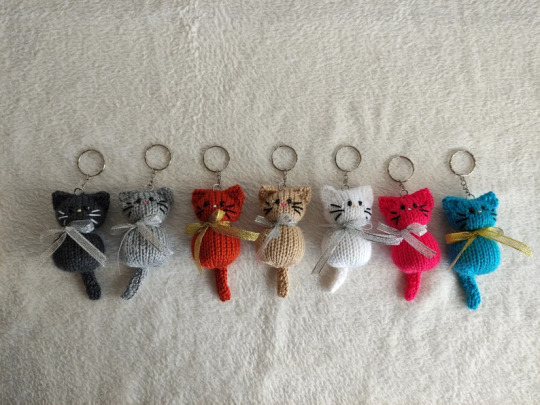
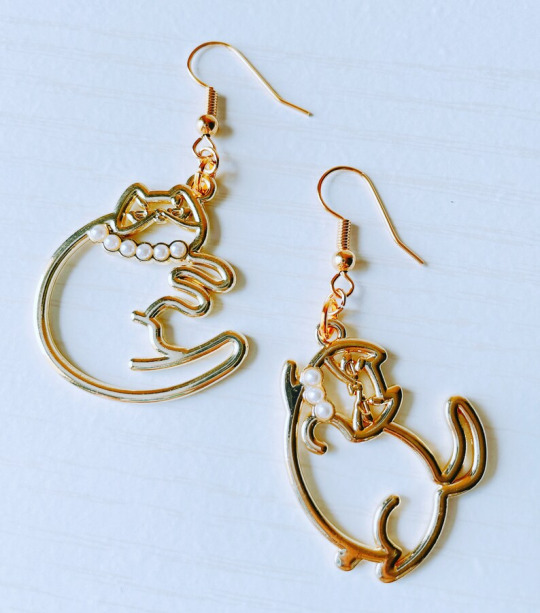


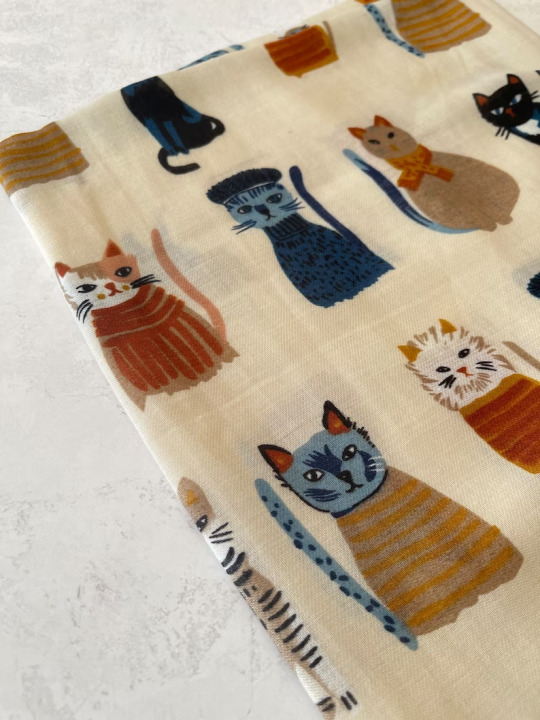
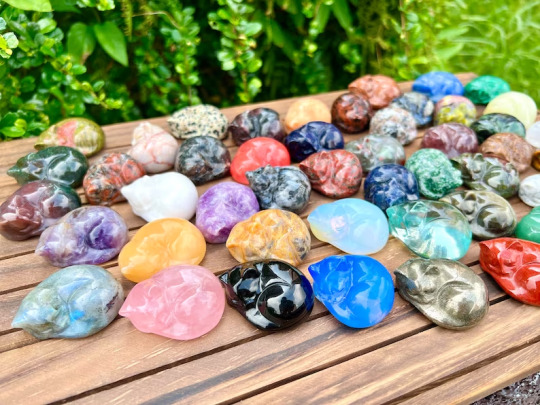
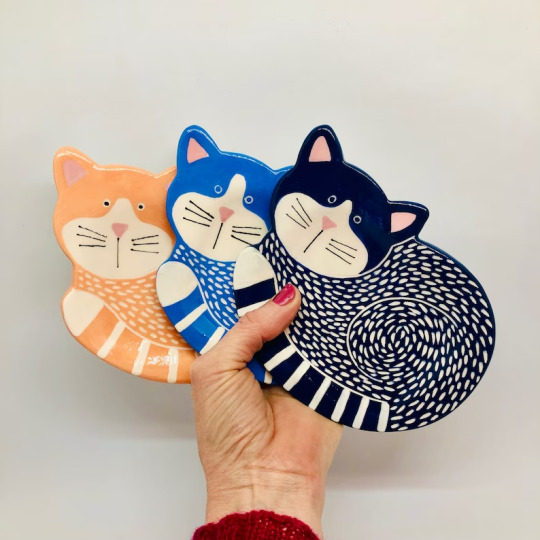
#therian#therianthropy#alterhuman#cat therian#feline therian#otherkin#therian community#cat theriotype
26 notes
·
View notes
Text
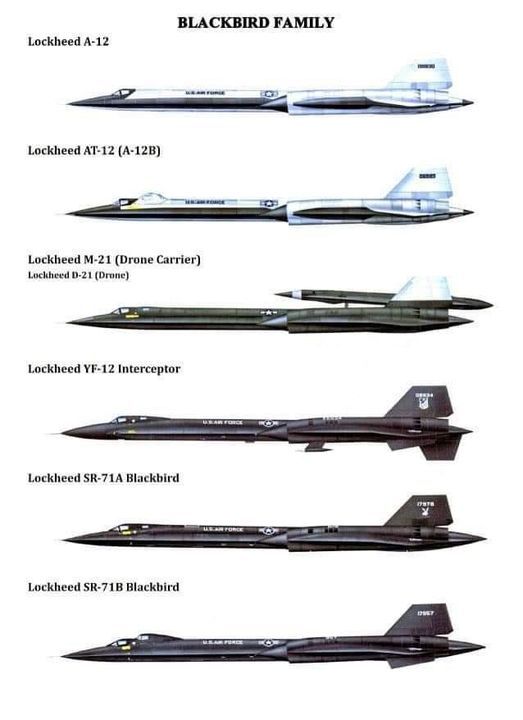

The SR-71, along with her sisters A-12 MD -21 and YF -12, was built at the Lockheed Skunk Works plant in Burbank, California, in the early 1960s. Kelly Johnson, designer of the Blackbirds and his prestigious crew of engineers set out to design and build perhaps the most remarkable aircraft in aviation history. Working with Titanium, a metal that had desirable characteristics for the high heat environment of Mach Three flight, proved in itself to be a daunting challenge. The metal had never been forged in large quantities and the quality had to meet strict controls for consistency. In addition, the US had to import the metal indiscreetly from the largest source in the world; the USSR. The landing gear on the SR-71 is the largest single piece of forged Titanium. Other segments of forged Titanium was made oversize and then milled to exact tolerances for stringers, fuselage and wing construction. At the end of construction almost 90% of the Blackbirds material consisted of Titanium.
~First time stealth was applied to an air frame~
Stainless steel was used for hydraulic and fuel lines. From the ground up the Blackbirds were designed to withstand the 900+ degree temperatures on the surface skin at Mach three or better. There were expansion joints in almost all fittings as the aircraft grew several inches from the high heat generated. To make the aircraft stealthy, plastic composite panels shaped like a triangle were inserted on the outer perimeter of the wing surfaces. There were alternating titanium and composite plastic wedges designed to break up the incoming radar signals. Rudders were canted inward for the same reason. The paint consisted of minute iron ferrite balls and the cost per quart of Blackbird paint was nearly $400. Needless to say, the entire aircraft was not regularly repainted but rather spot painted as needed. Exotic alloy metals such as Hasteloy X and ceramics were used in the construction of the Pratt & Whitney J-58 engines. Temperatures in the afterburner sections reached 3200 degrees Fahrenheit.
Leland Haynes is my source of some of the facts.
~ Linda Sheffield Miller
212 notes
·
View notes
Text

Silicon Carbide Recycling
The primary process used to produce silicon carbide (SiC) ceramics, the Acheson process, is highly energy intensive. As such, there is interest in finding new ways to reuse and recycle the material, with several avenues of interest being explored. One technique, known as RECOSiC©, produces high quality SiC from the waste byproducts of the Acheson process, using less energy and producing less carbon dioxide. Another avenue of interest is the recovery of silicon carbide from cutting slurry wastes. In the photovoltaic industry, this waste is sometimes known as solar grade silicon slicing waste or silicon carbide sludge and can contain both silicon carbide and high purity silicon.
Sources/Further Reading: (Image source - innovations report) (2020 article) (2021 article) (2021 article) (2017 article)
#Materials Science#Science#Ceramics#Silicon carbide#Silicon#Carbides#Recycling#Waste#WasteWednesday#2024Daily
9 notes
·
View notes
Note
do you have any favorite headcanons for omega kakashi? love your blog -3-
Cooking Kakashi (insert cooking mama ver kakashi icon... which is a game I would play the hell out of. I want him to like me so bad...)
I love that Kakashi can canonically cook very well and that he likes cooking for his loved ones. Even though the first of those people are no longer here, it brings him a lot of peace to cook for his Alpha.
He likes that he made something with his own two hands that contributes to the joy and health of his loved ones. It’s also an act of living that makes him feel more human and cooking tasty food for himself was one of the things he used to ground himself during his worst moments or when he was alone after missions (a good weapon needs to be able to at least function -> (eventually) I am a person and it's okay to enjoy things because I deserve it).
He was not originally much of an experimenter, but he learned enough about the basics that he was able to start improving upon recipes. His recipes are full of annotations because even though he's got a stellar memory, he's old enough he knows there's only so much space up there. However, half of these notes only make sense to himself. Good luck trying to replicate those dishes...
He's not much of a "collector", anti-clutter Kakashi
So his preferred method of receiving affection is not gift giving.
However, Cooking Kakashi™️ might accept a few things. Recipe books are a little hard because Kakashi has to be interested in more than just two or three things in the book. He typically prefers to decide on these himself. He likes to work through everything in the book and pick out his favorites. If you tell him you want to buy it for him though, he'll let you. A bookshop date, anyone?
The one thing he does love is the cooking supplies you buy him. High quality ceramics, one of a kind glassware, accent-like cups or bowls. If you're careful about only buying a piece here and a piece there, it doesn't build up clutter, and it becomes a nice special occasion kind of gift. Hot pot is not his most favorite meal ever but he loves the donabe you got him.
He also doesn't have a lot of spare nesting materials, but if you can talk him into letting you take him to a nesting supply shop, he'll usually buy something (because he thinks you think he needs more soft things, which makes him feel cared for but can also get overwhelming on occasion).
Overall though, quality time and some physical touch are his preferred ways of receiving affection.
Cat person who has dogs Kakashi
Kakashi shows up whenever he wants or perfectly on time, prefers only certain people and usually small gatherings or being alone (although being alone with his Person doesn't really count as company), has a lot of very, let's call them specific, habits, is incredibly particular about certain things... and is also something of a prankster.
In a way it's very funny because he's the pack leader of his ninken.
Very respectful but incredibly kinky Kakashi.
Consent is sexy and Kakashi is the sexiest because he's the kind of person who won't act without permission. He's also the kind of person who's almost too shy to even think of his Alpha in an explicit way. This isn't a purity thing. It's just a him being shy and feeling undeserving thing. Have to be careful because he's the kind of sub to say "you can do anything to me, I don't mind" and mean it, and part of a long term relationship with Kakashi is teaching him about his own boundaries.
I'm a big fan "yes he does wear that many layers" Kakashi
Part of it is a feeling of security. But it makes me wonder if he just tends to run cold for some reason. Bundle him up in blankets and feed him soup.
The hospital is very grateful for Kakashi's mate. He tends to run away less if his mate is allowed to either stay with him while he recovering and there's a few times where he's been very happy to get discharged home earlier because Tsunade knows someone responsible and capable of getting Kakashi to sit still while he's getting better.
Lazy Kakashi
Kakashi doesn't hate being a ninja. I get the sense that he thinks ninja are necessary in the world, and he's seen both the good and bad that shinobi missions can do. He doesn't hate it, but he's tired of it.
There's a difference between working hard because you have to and because you want to. I'm a huge fan of lazy Kakashi, no work Kakashi! he doesn't want to go on tiring missions anymore and he certainly didn't love being hokage! don't make him! Let him stay at home every day and do whatever he wants to do, let him spend all day in bed with you and a book and his puppies if he wants!
That said, he's been a shinobi so long, he would miss the athleticism if he ever had to leave, he likes being skilled. That's why he goes back to doing non-combat and teaching jobs after retiring. But he leaves plenty of space for well earned leisure time.
Hobby Husband Kakashi
He's used to having somewhat structured time, so sometimes he has trouble picking something to do on his day off. After the war, he also has to figure out how to fill additional hours since he doesn't stare at the memorial stone all the time.
He actually does like to just try new things. He's the type who naturally ends up pretty good at almost everything he tries though so there's not much he pursues more than one or two times. Once he settles in with his mate, he likes to do things with you. It's more fun and fulfilling than doing activities alone. His favorite hobby is reading though. Reading usually gives him an idea of what he might want to try next.

#from the notebook#oh look another thing I lost somehow and had to rewrite. rip me#i should go back to using a normal word processor instead of the drafts here#this is ask is from the first of february#truly the worst sorry#I needed a break from jjk content because it's making me feel very sad lately#finishing these was a perfect change!#hatake kakashi#omega!kakashi#naruto#omegaverse#alpha!reader#headcanons
71 notes
·
View notes
Text
A Rare Opportunity: Emergency Commissions!

Those that have followed me for a long time know that I don't often do commissions for a number of reasons. But times are extremely tight now, and with health insurance being threatened and mortgage falling behind, it's time once again to open these up.
💚 I will do: feral, anthro and furry creatures. My strength is with furred and feathered creatures.
👍I may possibly consider: A toonish human bust with a pet, with caution that this isn't my strongsuit. Fan OCs.
❌ I won't do: X-rated, suggestive, etc. Gore, violence. Vore. Various fetish materials. Full body humans, human-like plain-skinned creatures, strictly copyrighted stuff. Heavily detailed painting or backgrounds*.
(*I have offered this in the past, but this is not part of this commission opening. )
--
Sticker Style

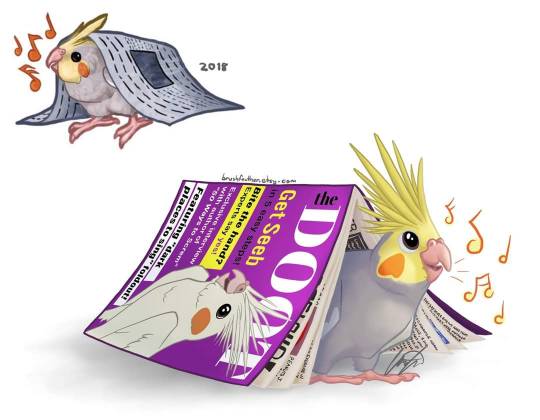
Left: simple sticker style. Right: complex sticker style/product parody.
My sticker style is bright and semi-toony, with expressive eyes, faces, and sometimes exaggerated motion. Time is spent carefully refining the lines and perfecting the colors for these, especially when being set up for print. This is the style used for the 'angel' and 'food parody' designs I'm commonly known for, which you are welcome to request.
Simple sticker style: $30
Complex sticker style: $40+. Product parodies, extra animal/character, detailed objects, florals, characters with clothing, etc: will quote based on complexity.
Add package 1: 8"x10" or similar print, 1 sticker, 1 magnet: +$10, includes US tracked shipping or international stamped envelope shipping.
Add package 2: 2 prints, 2 stickers, 2 magnets: +$15
Watercolor Style
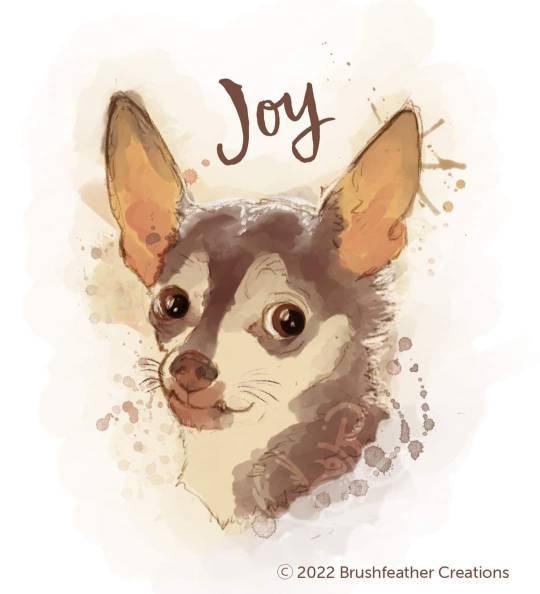

Left: Simple watercolor. Right: Detailed watercolor.
My digital 'watercolor' work is done loose and soft in a more sketchy style, but can be very involved when it comes to giving it lots of detail. Thus, this is the budget option if you're looking for something simple, but can be pricier for involved pieces, as it's more time consuming in that aspect.
Simple Watercolor style: $20-30. This can be a simple bust/portrait, or a full animal with minor detail. A clothed character, unless very minimal, will count as detailed, an animal with lots of texture and/or color, or a complicated pose.
Complex watercolor style: $50+ clothed characters, detailed objects, multiple characters, etc. This will be quoted based on complexity.
Add Print: ~8"x10": +$10, ~18x24: +$20 ~24"x36": +$25. Free US shipping only. Print-ready files will be provided for international customers to print locally.
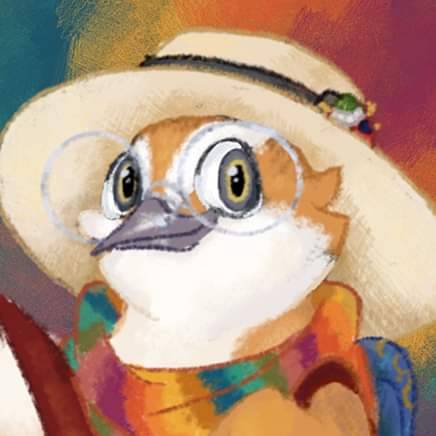
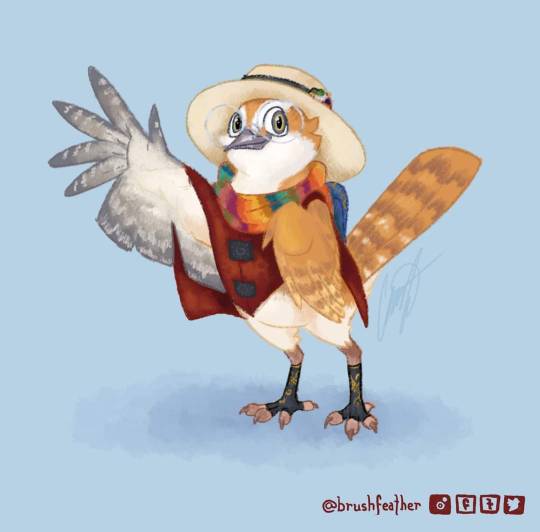
The same prices above also apply to digital pencil characters, portraits & icons. I don't work in this style as often, but would be delighted to do more! This style marries the semi-toonishness of my sticker style with the loose softness usually found in my watercolor pieces.
All of my digital commissions can be sublimated/printed on a number of items, ranging from clothing, to memorial ceramics, to high quality tumblers. Let me know if you are interested in adding printed materials to your order!
Custom Beanies
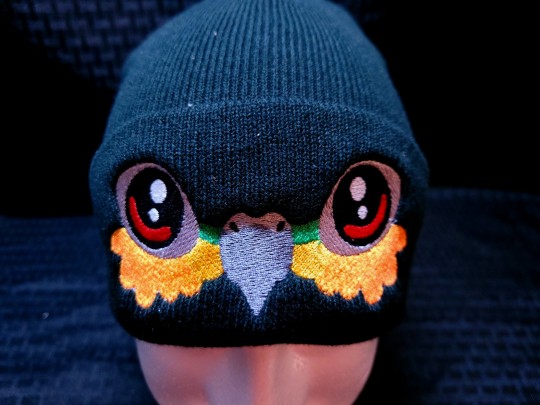
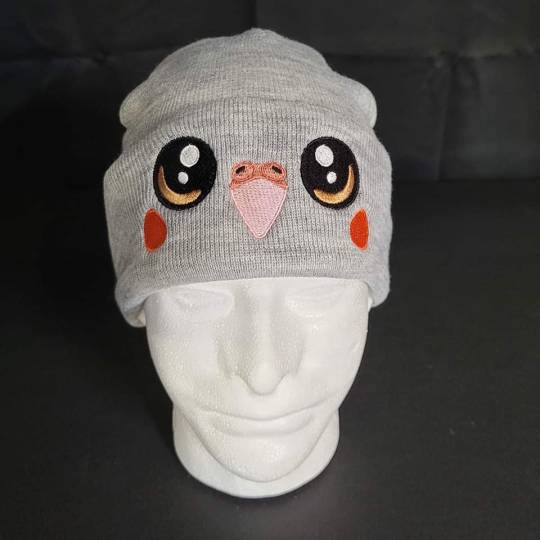
Left: high stitch count cuff, around $80 Right: low stitch count cuff, around $55
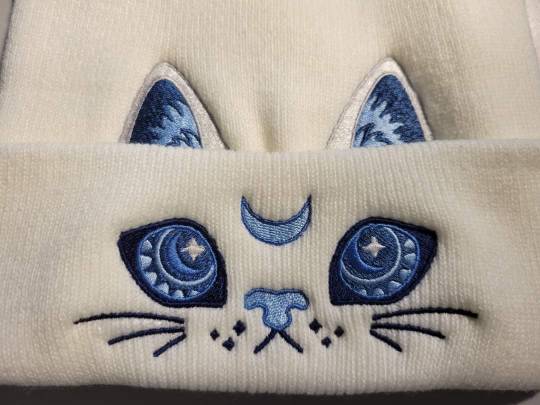
Bottom: Peek-a-boo hat, low stitch count, around $95
These are priced a bit different: though beanie designs may not be time consuming to draw, there is cost in having the design digitized into stitches, then the time and material to have them created. These are priced by location and stitch count. More fill area = higher stitch count = higher cost.
Cuff Design: $55+
Peek-a-boo Hat (cuff and above cuff): $95+
These all include the cost of a basic acrylic cuffed beanie purchased in a stock color. Any specialty beanies, dying, etc will come at an extra cost.
---
Interested? Heck yeah, you're my hero! Contact me via:
Messages - Tumblr isn't very reliable at alerting people of messages, but I will be checking regularly while commissions are open.
Facebook: the easiest way to reach me.
Email: My username @Gmail! I check email frequently.
@brushfeather.creations on Instagram
On Etsy: also a very easy way to reach me, as Etsy is sure to alert multiple times if a message is accidently dismissed.
Let's chat and get your perfect piece planned! ✨🎨
86 notes
·
View notes
Text

Warm your soul with a nice cuppa out of this black ceramic mug. Customize with cool designs, photos, or logos to make that “aaahhh!” moment even better. It’s BPA and lead-free, microwave and dishwasher-safe, and made of black durable ceramic and available in 11-ounce and 15-ounce sizes. The high-quality sublimation printing makes this black ceramic mug the perfect gift for your true coffee, tea, or hot chocolate lover.
.: Material: 100% ceramic with a glossy finish
.: Available in two sizes: 11oz (0.33 l) and 15oz (0.44 l)
.: C-shaped easy-grip handle
.: Microwave and dishwasher s
#Black Mug (11oz#15oz)#black and white#blacklivesmatter#black women#black beauty#sirius black#white#nuvialab flex
3 notes
·
View notes
Text
A Few More Art-Related Vocabulary

Lacquer: Any of a variety of clear or colored liquid coating substances that dries to a hard, durable finish, which can be further polished.
Leading lines: Actual or implied lines within an image that lead the viewer’s eye to another point in the image, or occasionally, out of the image.
Mammoth plate: A large glass plate measuring up to 18 x 22 inches, which is made sensitive to light and is used to make prints.
Marquetry: Numerous small pieces of wood or other materials that fit together like a puzzle and are applied to the surfaces of furniture. Marquetry patterns may be scenic, floral, abstract, or arabesque.
Medium (plural: mediums or media): (a) A material or technique used by an artist to produce a work of art, and (b) the adhesive that carries paint’s pigments.
Milliner: A person who designs, makes, trims, or sells women’s hats.
Negative: An image in which the colors, tones, and highlights are the reverse of those in the original subject. The film negative can be used to make a positive print.
Neoclassicism: The style of the Enlightenment in which artists focused on accounts of filial or national devotion, fidelity, and courage and sought to revive the ideal of classical Greece and Rome in architecture, sculpture, painting, and the decorative arts.
Nonrenewable resource: Natural resource that exists in a fixed amount and is being used up faster than it can be made by nature.
Orientalism: Refers to the imitation or depiction of aspects of Eastern cultures in the West by writers, designers, and artists.
Overmantel: An ornamental panel or structure above a mantelpiece (the protruding, often decorative shelf over a fireplace).
Painterly: Characterized by qualities of color, stroke, or texture perceived as distinctive to the art of painting, especially the rendering of forms and images in terms of color or tonal relations rather than of contour or line.
Pastels (also, fabricated chalks): Dry drawing media made from powdered pigments combined with nongreasy binders.
Patron: A person or group that supports artists or writers, especially by giving money.
Perspective: In art, a technique of depicting objects to convey the appearance of distance or depth on a flat surface. It is part of a mathematical system for representing three-dimensional objects and space on a two-dimensional surface by means of intersecting lines that radiate from one point (one-point perspective), two points (two-point perspective), or several points on a horizon line as perceived by an imagined viewer.
Photographic essay: A story illustrated through photographs, which may or may not be accompanied by text.
Phrygian [FRI-jee-an] cap (also, liberty cap): A soft, red, conical cap with the top pulled forward, worn in antiquity by the inhabitants of Phrygia, a region of central Anatolia. In the visual arts, it represents freedom and the pursuit of liberty.
Pinhole camera: A basic form of camera, usually the size of a shoe box, with a tiny hole for the opening and no lens. Light passes through the hole to form an inverted image on the film emulsion (suspension of one liquid in another).
Point of view: The place from which the viewer sees the landscape, or the place where the artist or photographer was sitting or standing when the picture was made.
Porcelain: A durable, fine-grained, nonporous, and usually translucent white ceramic ware that consists essentially of kaolin, quartz, and feldspar and is fired at high temperatures.
Source ⚜ More: Word Lists ⚜ Part 1 2
#art related#word list#terminology#writing reference#dark academia#spilled ink#writeblr#literature#photography#writers on tumblr#writing prompt#poetry#poets on tumblr#writing inspiration#langblr#linguistics#writing ideas#writing inspo#creative writing#rainbow#art#realism#arkhyp kuindzhi#art vocab#writing resources
39 notes
·
View notes
Text

14 Ways To Live A Healthier Life That Anyone Can Do
Use cast iron, stainless steel, glass, and ceramic cookware/dishes. Use wooden and steel for the utensils. Ditch the plastic and chemicals! They are even finding microplastic in the blood of newborn babies! If you can't afford to switch, switch slowly and buy second-hand! These materials will last through generations!
Buy and cook more fresh, high-quality food. Stop buying premade and processed garbage! The hidden massive amounts of fake sugar and additives in everything is far more damaging than a little bit of extra grass-fed butter or grass-fed meat on your plate. You can find local and even organic produce and meat for cheap at your local freshmarket, mexican grocery store, or asian grocery store. Aldi and Trader Joe's are also healthy yet cheap stores! You will also be surprised how little time it takes to cook versus having something pre-made, and with home-made food you'll have control over exactly how much sugar, fat, etc you have in a given meal. Neither of these are bad in moderation, but the key is moderation!
Prioritize your health and try to create less stress. Brush and floss your teeth, take care of your skin, eat as well as you can, move more, and sleep enough. These are things you should be doing AT MINIMUM to stay healthy. Stress also has a huge impact on health, so it is important to do your best to lower everyday stress and balance your hormones.
Do things that make you feel good. This ties into the less stress philosophy and the rule of everything in moderation, and this looks different for everyone, but generally focus on hobbies and habits that are good for you overall and dont cause addiction or mental health issues. The more things you incorporate into your life that you enjoy, the more you will enjoy your life.
Be aware of your feelings and honor them. No ignoring how you feel deep down! Notice what makes you smile and what makes you sad. Feel it all and try to see what your brain and body are trying to communicate to you about things. Your emotions and thoughts have a purpose, try to see what they're saying.
Try to wear or use more organic materials. Try to use cotton, linen, wool, etc for your clothes, sheets, and more. For jewelry try to use gold, silver, steel, copper, etc. Drop the acrylics and plastics. Invest in your clothing and wear quality materials - your health and wallet will thank you.
Try to kick any drug or alcohol habits. We only have one body in this lifetime and these things WILL catch up to you healthwise. The short-term dopamine is not worth the long-term consequences. Ask anyone who's suffered from their decisions from when they were younger.
Spend more time in nature. Being outside has many health benefits and it does incredible things for mental health. Find a place you can visit outside that brings you peace. Try taking a daily walk.
Learn to set boundaries for yourself. Including towards yourself! If you are pushed past your limits of exhaustion, honor your body and rest. It is okay to have soft, flexible boundaries, or hard boundaries, but they are rules we put in place in regards to ourselves to keep ourselves safe and happy! IE - "If I need sleep I will not keep pushing myself and I will go to sleep" or "I will not put up with being yelled at and I will remove myself from that situation".
Walk as much as you can, while you can. Try to opt out of convenience when possible and walk a little further to the front door of the store or try incorporating a daily walk into your routine. Moderate exercise is great for our health!
Do something daily that will exercise your brain. Whether it is a fun crossword puzzle or just something in your daily life you need to problem solve, do something that is going to flex that brain power and keep those pathways firing. If we don't use our connections, we literally lose them over time!
Talk to at least one person a day for at least 5 minutes. We are social creatures that thrive off community, so it is extremely important for our mental health to find connection with others and feel seen and heard and like we matter. Not only that, routinely reaching out to others will help you make and maintain relationships of all natures!
Educate yourself. Learning shouldn't just stop after you finish schooling. You should continually be trying to further your knowledge about yourself and the world around you. You live in the age where information is readily available all the time, so make an effort to use it to better your life, and learn how to sift through the misinformation as well. Not knowing how to do something is no longer an excuse as an adult when you can easily look it up or ask for guidance.
Consume more positive media and less media overall. What we watch and listen to really affects our thoughts, moods, and subconscious. There is a reason upbeat music motivates us! Try to keep your media exposure to uplifting and feel-good things rather than ones that cause anxiety or sadness.
#health#wellness#advice#glow up#healthy#fitness#exercise#diet#food#fresh#organic#natural#nature#improve#improvement#self love#self care#uplifting#upgrade#healthier#lifestyle#life#help#self help#knowledge#self improvement#goals#body goals#better#getting better
13 notes
·
View notes
Text
It's time for me to rant about things i'm mad about that no one else cares about
so Michael's (the craft store) sells collectible town miniatures from a brand called Lemax. they (michael's) sell two seasonal towns, christmas and halloween (lemax has other towns but they seem to be something they don't make/sell anymore). i don't care about the christmas one so i'm gonna talk about the halloween one but i'm sure this also applies to the christmas one. (i've also found a place online called eerie emporium that sells spooky town, they're much better than michael's about holding onto older stock of it)
i started collecting spooky town in college, when i found a graveyard gate piece that lights up and some figurines on mega sale the day after halloween. i've really gone ham with it ever since, but i need to find an alternative. the price keeps going up (ONE building this year costs $200, which is absolutely outrageous, esp since it isn't a very good looking one) and the quality keeps going down.
they used to make a lot of their buildings out of a ceramic-type material (i think it was a plastic ceramic, but it still feels and behaves like ceramic) and the ones that weren't ceramic were a sturdy plastic, but now they've moved to all flimsy plastic all the time.
i understand that certain parts have to be made of lighter materials, particularly if they have moving parts, but even the ones that just have a nightlight bulb in them are oops all plastic. (though they do have led nightlight bulb replacement things that don't get nearly as hot, so that's nice)
another drop in quality is the paint jobs. they used to actually have some detail on the buildings and the figurines, but now it's like they just took a big brush and went "splort splort splort that looks fine". some of the people don't even have eyes and mouths anymore, just flesh toned molded plastic. i hate this. i shouldn't have to repaint things this expensive just to make them look good. i've modified pieces before (i was weirded out by the grocer having a (human) body hanging in the window so i made essentially a new sticker without the person and figured out how to remove the meat display thing and put in the new sticker), but i shouldn't HAVE to modify them to make them look even passable.
the figures are stupid expensive too, but not nearly as bad as the buildings. i've found out that if i stop caring about the scale being exactly right, i can buy the michael's in-house brand (ashland tiny treasures) of figurines for much cheaper (which are back after a couple years, no idea why they stopped selling those for a little bit but i was upset about that but i'm having trouble finding them their website). i also have designed some minis in HeroForge that i'll do up for spooky town one day when i'm rich and famous and buy a 3d printer, so ultimately the figures aren't something i'm terribly worried about never being able to find again, i'm just frustrated about them.
i love things about the lemax spooky town like the colored lighting and the moving parts, so i can't just move to only ones with nightlight bulbs in them. i certainly have no objections to ones with nightlight bulbs and no moving parts, i have several that are lemax and like 3 that are little houses from some unknown brand that i thrifted that don't match the lemax at all, but i still love them. i've thrifted vintage lemax pieces (for the human town portion of spooky town), but they're hard to find bc resale value is high for older pieces, but that's a whole other issue.
YET ANOTHER issue with lemax is the mechanical parts just straight up not working. i've got this one piece that's a skeleton and grim reaper in a hot air balloon that's supposed to spin, but it completely stopped working after like 2 years. i managed to pop it open and fix it, but the next year it wasn't working again and i couldn't fix it. there's also a pretty big facebook group about fixing specifically lemax pieces, since lemax refuses to offer repairs or replacements for broken pieces, which is pretty stupid, but that does mean that there's been an opportunity for a few people in that fb group to actually get paid to fix them (so i guess one nice thing coming out of corporate greed). i do have a piece that i intentionally broke, the ghoulish gourd, which has a jack o lantern on top that sways back and forth and the top half of it with the eyes spins 180 to have evil or happy eyes and makes the LOUDEST snapping noise when it does that (i just cut the wire on it so it doesn't have power to the spinning mechanism). the spinning/snapping also knocks the jack o lantern off its base, which i have to re-seat every year because it was previously holding on with sheer willpower, since glue doesn't seem to be very good at holding it on.
there are absolutely things i love about the lemax spooky town, but i need to find an alternative, because i'm just starting to get to the point of being over it, and i don't want to lose another thing i love (namely, having a little halloween town) to corporate apathy.
rant over.
#halloween#frustration#halloween decorations#spooky town#lemax#miniatures#miniature town#michael's#rant#corporate apathy
4 notes
·
View notes
Text
Using Mosaic Tiles to Add Value to Your Property: A Comprehensive Guide
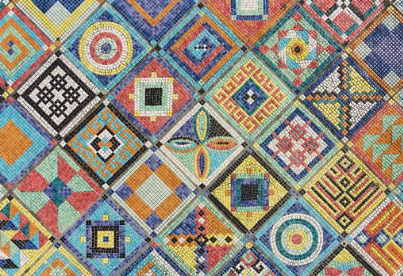
Imagine walking into a home where the first thing that catches your eye is a stunning mosaic tile entryway, its intricate patterns telling a story of craftsmanship and elegance. This is the power of mosaic tiles - small pieces of art that can transform a space and significantly boost a property's value. Let's embark on a journey to discover how these tiny treasures can make a big impact on your home's worth and appeal.
The Timeless Appeal of Mosaic Tiles
Mosaic tiles have been adorning homes for thousands of years, from ancient Roman villas to Byzantine churches. Today, they're experiencing a renaissance in modern homes, bringing a touch of timeless beauty to contemporary spaces. A trip to your local ceramic tile shop will reveal an astounding array of options, from classic designs to cutting-edge patterns.
According to a recent National Association of Realtors report, homes with high-quality tile work can see up to a 5-7% increase in value. That's a significant return on investment for a relatively simple upgrade. But how do you choose the right mosaic tiles for your home?
Choosing the Right Mosaic Tiles for Your Home
When you step into a ceramic tile shop, the choices can be overwhelming. But fear not - choosing the perfect mosaic tiles for your home is an adventure in creativity. Consider the material - ceramic, glass, stone, or metal - each brings its own unique character to your space. Think about size too; while all mosaic tiles are small, they can range from tiny 1/4 inch pieces to larger 2 inch squares, each creating a different effect.
Color is another crucial factor. Light-colored mosaic tiles can make a room feel more spacious and airy, perfect for small bathrooms or kitchens. Darker tones, on the other hand, can add depth and coziness to larger spaces. And don't forget about patterns - from simple geometric designs to complex pictorial scenes, the pattern of your mosaic tiles can set the tone for the entire room.
Lastly, consider the grout. It's not just the glue that holds your tiles together; it's an design element in its own right. A contrasting grout color can make your mosaic tiles pop, while a matching color can create a more subtle, unified look.
Where to Use Mosaic Tiles for Maximum Impact
Now that you've chosen your perfect mosaic tiles, where should you use them to add the most value to your property? Let's take a tour through a home and explore the possibilities.
We'll start in the kitchen, where a mosaic tile backsplash can be the star of the show. It not only protects your walls from splashes and spills but also adds a pop of color and personality. According to a study by Houzz, 87% of homeowners upgrading their kitchens chose to install new backsplashes, with mosaic tiles being a popular choice.
Moving to the bathroom, mosaic tiles reign supreme. They're water-resistant, easy to clean, and can add a spa-like luxury to your space. Picture a shower enclosure with shimmering glass mosaic tiles, or a vanity backsplash that catches the light just so.
In the entryway, mosaic tiles can make a lasting first impression. A beautiful mosaic floor or accent wall sets the tone for your entire home, welcoming guests with a touch of artistry.
Don't forget about outdoor spaces! A plain patio can be transformed into a Mediterranean-inspired retreat with the right mosaic tiles. They're durable enough to withstand the elements and can add a touch of sophistication to your outdoor living areas.
Finally, consider giving your fireplace a facelift with mosaic tiles. A tiled surround can turn a boring fireplace into a stunning centerpiece, making a big impact in your living room with a relatively small investment.
The DIY Route vs. The Professional Touch
For the handy homeowner, installing mosaic tiles can be a rewarding DIY project. Many ceramic tile shops offer DIY-friendly options, such as mosaic sheets that make installation easier. The process involves preparing the surface, planning your layout, applying adhesive, placing the tiles, grouting, and finally cleaning and sealing.
However, if you're not confident in your DIY skills or you're dealing with a large or complex project, hiring a professional can ensure a flawless finish. Many ceramic tile shops can recommend reputable installers in your area. According to HomeAdvisor, the average cost to install mosaic tiles ranges from $10 to $30 per square foot, including materials and labor. While this might seem steep, remember that quality installation can significantly impact the value added to your home.
Maintaining Your Mosaic Masterpiece
To keep your mosaic tiles looking their best and maintain your property's value, regular maintenance is key. Think of it as caring for a work of art - which, in essence, it is. Clean your tiles regularly with a pH-neutral cleaner, avoiding harsh chemicals that can damage the tiles or grout. Reseal grout lines annually to prevent staining and moisture penetration. And if you notice any loose or damaged tiles, address them promptly to prevent further issues.
The ROI of Mosaic Tiles
While the upfront cost of mosaic tiles might be higher than some alternatives, the return on investment can be substantial. A study by Remodeling Magazine found that minor kitchen remodels, which often include new tile work, can recoup up to 80% of their cost at resale.
Moreover, homes with unique, high-quality features like custom mosaic tile work tend to sell faster. In a competitive real estate market, these distinctive touches can give your property a significant edge. It's not just about the monetary value - it's about creating a home that stands out in potential buyers' minds.
Eco-Friendly Options and Current Trends
For the environmentally conscious homeowner, many ceramic tile shops now offer eco-friendly mosaic tile options. These can include recycled glass tiles, tiles made from sustainable materials like bamboo or cork, or locally sourced stone tiles to reduce transportation emissions. Using sustainable materials not only adds value to your home but also appeals to the growing market of eco-conscious buyers.
As for current trends, geometric patterns are having a moment, as are neutral color palettes with pops of bold color. Large-format mosaic designs are gaining popularity, and metallic and iridescent finishes are adding a touch of glamour to many homes. Staying current with these trends can help ensure your home feels modern and appealing to potential buyers.
Conclusion: Small Tiles, Big Value
From ancient art form to modern design staple, mosaic tiles have stood the test of time. Their versatility, durability, and sheer beauty make them an excellent choice for homeowners looking to add value to their property.
Whether you're planning a major renovation or just want to update a small area, mosaic tiles offer endless possibilities. With careful selection from your ceramic tile shop and proper installation, these tiny pieces of art can have a big impact on your home's value and appeal.
Remember, the key to success with mosaic tiles is quality - in materials, design, and installation. So take your time, plan carefully, and don't be afraid to seek professional help if needed. The result will be a beautiful, valuable addition to your home that you'll enjoy for years to come. After all, in the world of home improvement, sometimes the smallest details can make the biggest difference.
3 notes
·
View notes